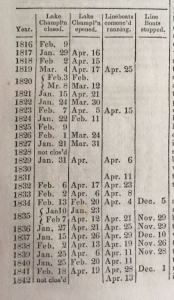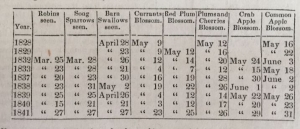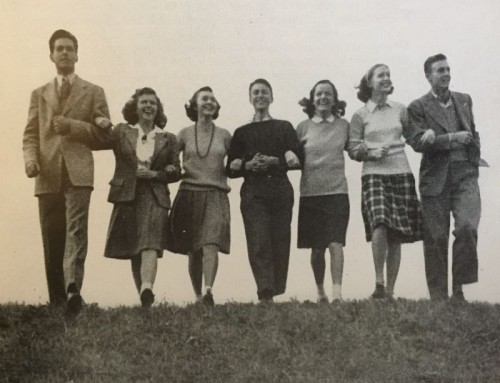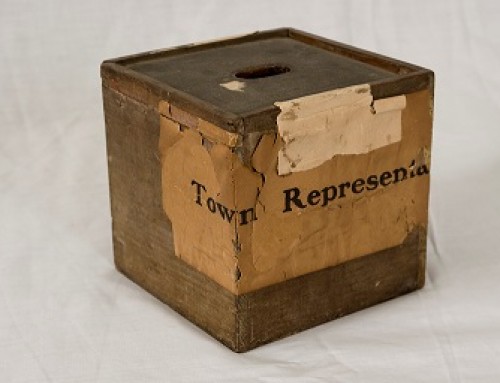 Zadock Thompson was the first person to write about Vermont history and natural sciences. His books include Gazetteer of the State of Vermont (1824), History of the State of Vermont (1833), and Natural History of Vermont (1850).
Zadock Thompson was the first person to write about Vermont history and natural sciences. His books include Gazetteer of the State of Vermont (1824), History of the State of Vermont (1833), and Natural History of Vermont (1850).
Thompson’s 3-volume History of the State of Vermont is virtually an encyclopedia of all things Vermont. The first section is a natural history that catalogs and describes the state’s plants and animals. Volume two covers the civic history. The third volume is a gazetteer of each of Vermont’s 251 towns. To accomplish this, he wrote to town postmasters and asked them to find contributors to the project. He, himself, wrote over 100 of the entries.
His chapters on natural history include tables such as this one that documents the ice on Lake Champlain and the steamboat schedules. He describes the average snowfalls and the number of days sleighs have run each year.
He wonders about the smoky atmosphere noted in the spring and autumn and concludes that it might be from “extensive burnings in some unknown part of the country.”
He laments the near extermination of the beaver and passenger pigeon.
His observations make him an early observer of man’s impact on nature.
It would be interesting to compare his table of spring observations to modern dates for the arrival of birds and blossoming of flowers.
He sums up Norwich in this way:
Norwich village is pleasantly situated on Norwich plain, and contains a handsome meeting house, the Norwich university, several stores, a tavern, a considerable number of mechanics’ shops, and about 40 dwelling houses. The town contains 5 meeting houses, 1 grist and 9 saw mills, and 5 stores. Statistics of 1840:
Population, 2,218
Horses, 481
Cattle, 2,348
Sheep, 13,395
Swine, 1,559
Farm production included wheat, barley, oats, rye, buckwheat, Indian corn, potatoes, hay, sugar, and wool.
Zadock Thompson’s history is just one of many books in the NHS library which provide important context for our archives and artifact collections.








